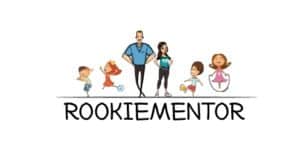This page may contain affiliate links, meaning we receive a commission if you decide to make a purchase through our links, but this is at no additional cost to you. Please read our privacy statement for more info.
Competing in a sport of any kind builds discipline, toughness, character, and general physical attributes such as strength, flexibility and speed which are carried on throughout life. However, sports are not without risk, and an injury can leave an athlete sidelined; unable to reap the benefits that sports bring.
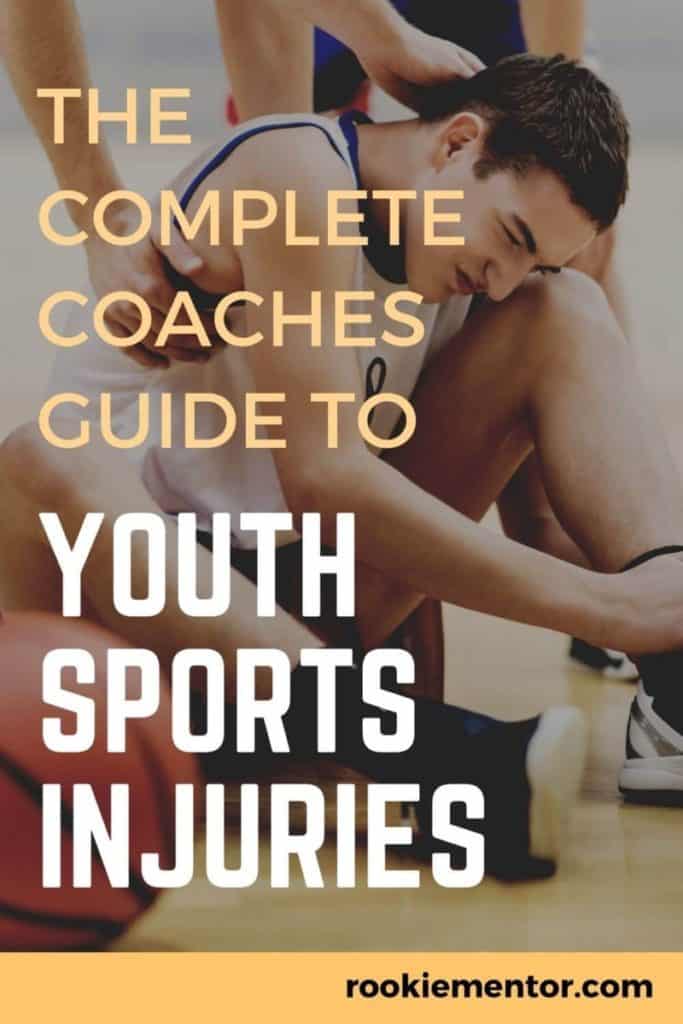
Injuries are inevitable in youth sports but coaches play a vital role in controlling their occurrence. They need to understand; age, gender difference, stages of development, sports-specific injury rates, youth sports specialization, injury prevention strategies and injury management.
Coaches, nobody wants to put their young athletes at risk, particularly when doing something fun like playing sports. This post guides you through the occurrence of injuries in youth sports, how to prevent them and lastly how to manage them if they do unfortunately occur.
Youth Sports Injury Basics
Roughly 3.5 million children are injured annually competing in a sport. (source). Of these injuries, the vast majority are minor. However, more serious injuries do occur, such as concussions, spinal cord injuries, and fractures. Coaches need to be involved in the management of these injuries, from prevention to return to play.
Coaches are a vital part of the process in mitigating injury risk.
A coach needs to make appropriate referrals to doctors and other medical professionals when injuries are suspected and make sure the athlete is ready to return to the sport after an injury has occurred.
With this being said, there are some other considerations coaches should make in keeping players healthy. And an overview of some of the general causes of injury in the young athlete is a great place to start.
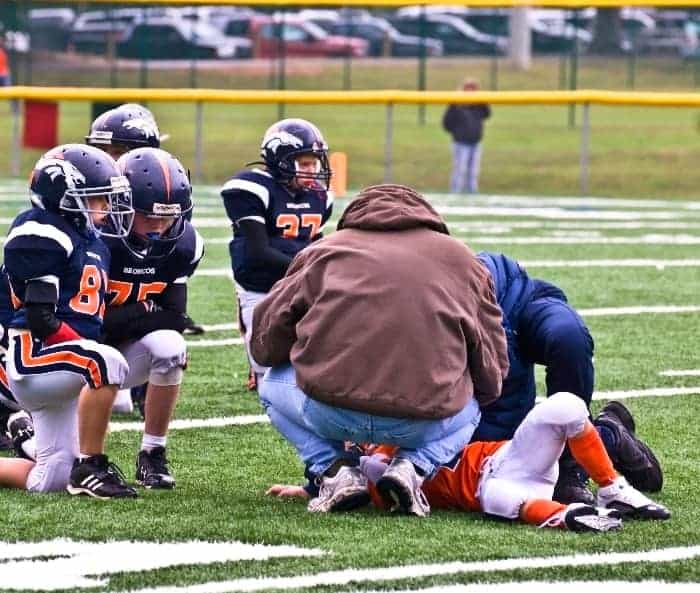
Causes of Injury in Youth Sports
Type of Sport
Every sport comes with its own set of unique challenges and injuries that go with the territory. As stated above, football, basketball and soccer tend to be on the higher end of the list of sports injuries annually, as those sports involve contact, high speed direction changes and a lot of players participating.
It’s important the coach understands the sport they are coaching, so that he or she can best prepare the athletes for the challenges faced with it. (source)
Often coaches will be involved in sports that they themselves have participated in frequently throughout the years. In these cases, they have a good understanding of the common injuries associated with the sport in question.
A soccer coach for example who played the game throughout most of his or her life has more than likely suffered from or seen a fellow player with a torn ACL. This coach would have at least a very superficial understanding of an ACL injury and of the need for an athlete who sustained this injury to be seen by a medical provider.
Sometimes, however, coaches get placed in sports in which they have no experience. This can happen in regional areas where there is a paucity of coaches available or probably for many reading this article, your child took a liking to playing a game and you wanted to volunteer your time to help.
For example: If a basketball coach is a golfer, and volunteers to help out with his daughter’s basketball team, he may very well be appointed as the head coach. If this coach has never watched or played any basketball before, it would not be a good approach to train the basketball team as if they are golfers.
No, the best place to start would be to watch a lot of basketball, potentially play the game yourself socially should the body allow, and ask those who know a lot about the sport any questions that still linger.
This way the coach will understand some of the stresses that the sport puts on the body and can understand what his or her athletes are feeling. Thus, leading to a better connection and ability to see potential injuries in his or her players. (source)
Related: Can You Coach a Sport You Never Played at the Youth Level?
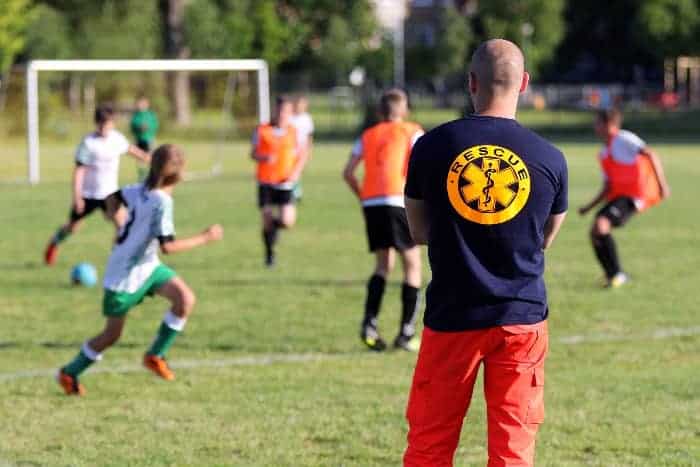
Age and Physical Maturity of Athletes
Depending on the age of the athlete, they may not understand the risks of pushing through an injury. Therefore, it is important that the coach establishes trust in each of his or her athletes so that they know to tell him or her when something is hurting.
As a general rule, the younger someone is, the less developed their bodies are. Essentially, they are still growing. So, the stresses placed on their bodies need to be proportional for what they can handle. (source)
There is some debate about how young is too young to start an athlete in sports or in strength training. It is well outside of the scope of this post to discuss the research behind these theories. However, for a coach, focusing on the athlete getting better at the sport safely, while having fun and avoiding injury should be their main goal.
The best way to do this is to establish trust in the athlete, and reach out to a medical provider in your area if you have any specific questions about a training program or a specific athlete.
Establishing an ongoing relationship with a local physical therapist, athletic trainer and doctor can go a long way in developing a specific, research-based method for preventing and treating injuries in your athletes.
The bottom line when it comes to dealing with young athletes in terms of age differences is this:
young athletes should not be expected to act like or perform like adults.
There needs to be a level of understanding and compassion for the athlete so that he or she learns to love the sport, doesn’t get worn out physically or mentally and gets to maximize their potential playing without the risk of injury.
Coaching young athletes? Read; How To Coach 8 and Under Swimmers and How to Coach Soccer to 5-Year-Olds
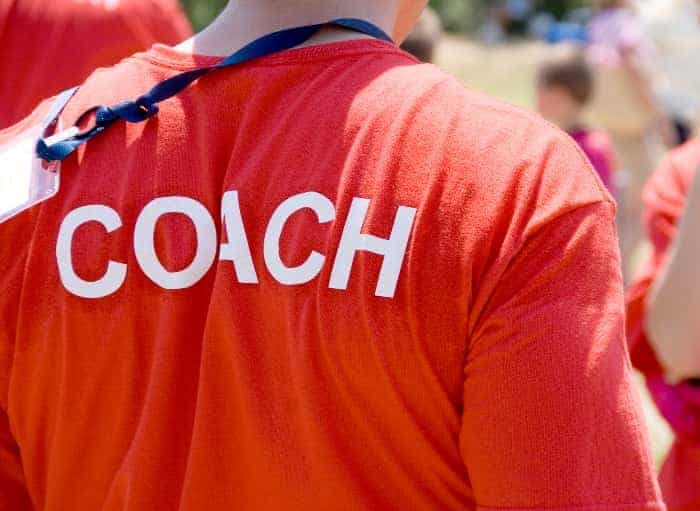
Gender of Athletes
There are specific injuries that can occur more in certain genders than in others. For example, female athletes tend to tear their ACLs more than male athletes.
Read more about the special techniques required to coach female athletes here.
There has been considerable research in this area, and the reasons why this happens are up for debate, but for simplicity sake: there are differences in the prevalence of injuries among genders. (source)
As coaches, it’s important to understand the types of injuries that occur within the game you are coaching and are those same injuries prevalent in the gender of the athlete you are coaching.
If so, structure your practice plans to potentially avoid added strain on these areas and know the warning signs should a player articulate soreness in the body that might lead to further injury.
Specialization of Sport
While the human body is growing and adapting to the stresses placed upon it, different muscles are emphasized with different movements.
In the past, this was less of an issue, as the athlete would play a sport in the fall (i.e. football), a different sport in the winter (i.e. basketball) and another sport in the spring/summer (i.e. lacrosse).
Different muscles, joints, levels of impact would be emphasized with each sport, giving those elements that were heavily used in the previous season a break.
However, a recent and troubling trend has developed: specialization.
This means that athletes play one sport all year long. Playing only one sport puts the same stress on the body without rest for far too long, forcing the body to adapt to only those stresses.
This causes the other muscles and joints, which would ordinarily get put to use during the other sports, to get weaker and less stable, leading to injury.
To illustrate this, imagine a door that swings in both directions. If it is only ever pushed in one direction, the supports on that side will be overworked and will eventually get weaker, potentially breaking down.
It’s the same principle when applied to a joint in the body. If the shoulder is only used to pitch a baseball all year long with very little rest and very little movement in any other direction, eventually it will break down. (source)
This door swings in multiple directions, just like a shoulder moves in multiple directions. If only one of those directions is emphasized, the others will suffer.
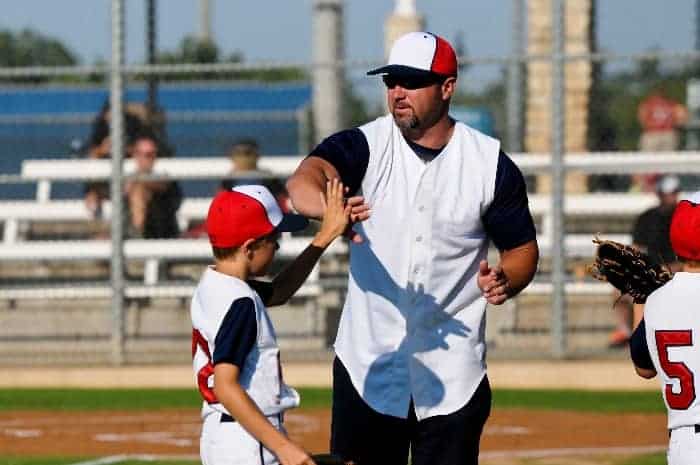
Overtraining
Couple specialization with overtraining, and one has the perfect recipe for injury.
Overtraining goes hand in hand with specialization. This is essentially loading certain muscles or joints with too much stress for too long without rest. Overtraining can relate to a single session or to many sequential sessions working the same movements.
Young bodies need time to rest and recover so that they can develop properly. Without rest, muscles will not respond as well and breakdown can begin to occur in the muscles, ligaments, tendons and bones associated with the movement. (source)
Overtraining can occur with strength training, or with sports-specific repetitions. This is to say, that if an athlete performs a bench press every day, without doing any accessory movements or incorporating rest days, overtraining can occur.
In the same vein, if a pitcher throws 100 times a day every day without rest, all year long, overtraining can occur as well. Read How Do You Become a Successful Little League Coach?
Preventing Injury in the Young Athlete
As it stands so far, we’ve provided you with the signs to look out regarding injury when coaching young athletes. But what are some of the practical things you can do to help them avoid injuries from participating in your sport? That’s where we can help out below.
Develop a Warm-up and Cool-down
If one spoke to 10 different specialists in the athletic setting, one would be likely to get 10 different answers on what the best method is for incorporating a warm-up and cool-down.
However, there are general principles that should be incorporated, and also some research-based specific warm ups that should be incorporated when applicable.
One specific warm-up that has gained a lot of traction in recent years is the FIFA 11+ warm-up. It was developed to address the issue of lower body injury in soccer players. Since then, it has been incorporated by soccer teams at many different ages and levels of skill with success in reducing injury rate.
The video below illustrates the FIFA 11+ warm up routine
This warm-up routine works well for athletes participating in sports that require a lot of running and cutting, but obviously is inappropriate for athletes where they do not perform these movements regularly, such as swimmers.
A good start would be to reach out to a local health professional for guidance on developing a warm up and cool down. But some of the major points of emphasis are:
Warm-Up:
The general goal of a warm-up should get the body ready for practice or competition. (source) While static stretching has been called into question in recent years for its efficacy in preventing injuries, a dynamic, specific warm-up is still encouraged for athletes.
1. Movements should start with low intensity and progressively increase in intensity
2. Movements should be specific to the sport in question
3. The entire warm up should be at least 10 minutes long
Cool-Down:
The general goal of a cool-down should be to get the body ready to rest after practice or competition. This can prevent the heart rate from lowering too quickly after it was very high during the event. (source)
1. Movements should get progressively easier
2. Movements can incorporate some elements of static (held) stretches
3. This should be done before the athlete sits down after competition or practice
Encourage Rest on Off Days
Kids in today’s world have a lot of demands placed on them. From the beginning they are pressured into being involved in as many activities as possible.
It’s not unusual for a child to leave for school around 7:00 am, go to practice immediately after school, and then get home after 7:00 pm, while still having to find time to do homework. This doesn’t leave much time for self-discovery or rest time.
This enormous amount of pressure and stress placed on children can predispose them to injury and burnout in sports.
This is from a host of reasons but specifically from getting inadequate rest, and from cortisol flowing throughout their bodies at all times.
A coach can be a valuable resource in educating children that it’s ok to take a day off to just rest or do things that they enjoy. It will make sport seem less like a chore, if they are able to have some free time to do as they please.

Listen to the Athlete
A coach may be the first person that an athlete feels comfortable reaching out to about an issue. There may be a problem at home, an issue with other commitments impacting the sport, or a nagging injury that he or she hasn’t felt comfortable bringing up with anyone else.
Regardless, young athletes need to be able to trust their coach and know that the coach is listening to what they are saying.
Some ways to establish this trust are to show that the coach and the players are both part of the same team. This can be accomplished in many ways, but some common implementations are running sprints with the team on occasion, giving the team a random day off from practice in appreciation, or as simple as putting on some food for the team after a game or practice.
A recognition of the importance of taking time to rest and enjoy life outside of sports also goes a long way. Never underestimate how much these small gestures mean to a young athlete.
Keeping reading: The Best Way Coaches Should Communicate With Athletes
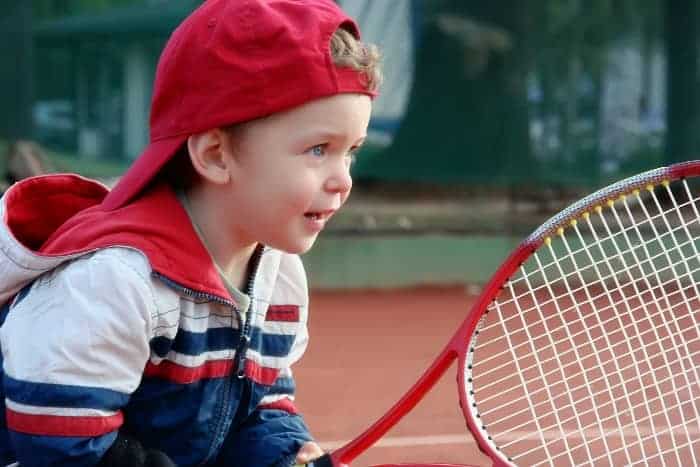
Organize a Professional to Talk with the Players
This has been reiterated multiple times in this post, but it can’t be overstated. Having someone knowledgeable about injuries available to come in and talk with the players about injury warning signs, prevention, teach a warm-up, or do an athletic screen on the team is invaluable.
This provider coming in on a semi-regular basis, even just once before the season starts would be immensely helpful.
Medical providers are experts at dealing with injuries and can provide a wealth of knowledge that the coach can incorporate into practice and games. Plus, establishing this relationship will make it easier to reach out to this professional if there is a suspected injury in an athlete or a question about when an athlete should return to play.
Depending on the professionals expertise in a given field, they can additionally provide the coach and the team with proper dietary advice and feedback on the current training regimen.
There is never any shame in reaching out to an expert for help, irrespective of you being a new or seasoned coach!
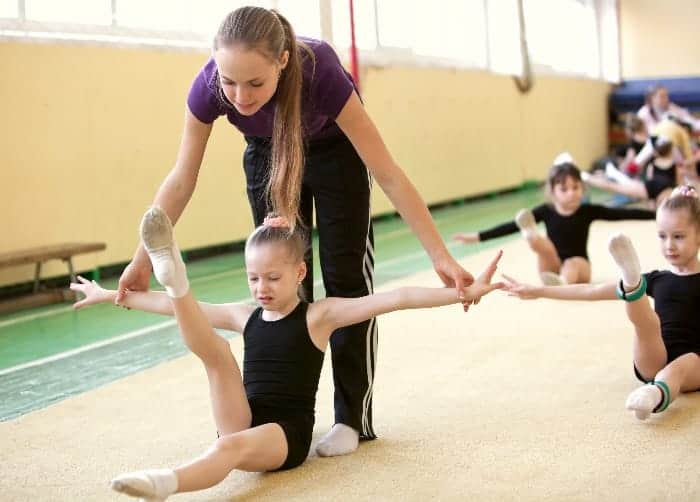
Keep Reading:
- What is the Best Sports Video Editing Software & Apps?
- Why Do Coaches Get Fired?
- Why Do Youth Coaches Bench Good Players?
The Bottom Line – Youth Sports Injuries: A Coach’s Guide
Youth sports are a wonderful way for children to learn lifelong lessons about health, competition and a whole host of other topics. But unfortunately, injuries will happen in sports, regardless of what mitigation efforts are put into place.
The important thing to keep in mind is that the athlete is a growing person, full of desires and complicated life circumstances. It’s a difficult job being a coach and managing all of the different parts of the young athlete, but it’s an extremely rewarding one.
So, to lessen the severity and occurrence of injuries to keep athletes on the field: incorporate a standard warm-up and cool-down specific to your sport, establish relationships with local healthcare providers, encourage rest days, and listen to your athletes when they tell you something doesn’t feel right. And most of all: HAVE FUN!
Daniel
Sources
- 2. Insurance Information Institute. 2021. Facts + Statistics: Sports injuries | III. [online] Available at: <https://www.iii.org/fact-statistic/facts-statistics-sports-injuries> [Accessed 16 February 2021].
- 9. 123RF. 2021. Old saloon entrance with swinging doors. [online] Available at: <https://www.123rf.com/photo_113061563_old-saloon-entrance-with-swinging-doors.html> [Accessed 16 February 2021].
- 10. CoachUp. 2012. CoachUp | Private and Group Coaching Lessons and Local Sports Training Courses. [online] Available at: <https://www.coachup.com/nation/articles/baseball-training-pitching-mechanics> [Accessed 16 February 2021].
- 11. Slideshare.net. 2014. Fifa 11+: Warm-Up to Prevent Injuries. [online] Available at: <https://www.slideshare.net/PedMenCoach/fifa-11-warmup-to-prevent-injuries> [Accessed 16 February 2021].
